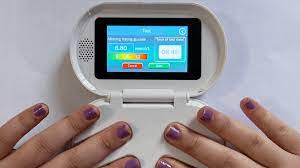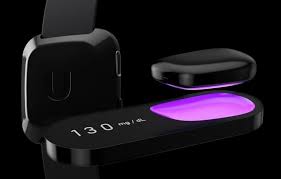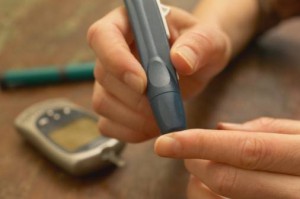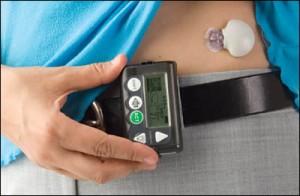Non Invasive Blood Glucose Monitor
Top 5 companies developing non-invasive glucose monitors in 2023
The successful development of a non-invasive glucose monitor that can accurately measure blood sugar levels for diabetics without the need to prick the skin has been in the works for decades.
Why wouldn’t diabetes patients flock to a device that can take blood sugar levels through saliva, sweat, or a wristband that uses radiofrequency technology?
Even in the midst of the COVID-19 pandemic, many companies have been pushing forward CGM (noninvasive continuous glucose monitoring) space.
However, to date, it has been hope versus hype, as attempts to develop accurate non-invasive glucose monitors have failed. Yet, experts still have hope for the potential for non-invasive devices to soon become a reality in the next 5 years.
How does a non-invasive glucose monitor work?
There are systems being developed for home use as well as hospital and in-clinic use. Home systems are typically wearables whereas hospital systems will be tabletop or non-wearable systems.
Analysts categorize non-invasive glucose monitors by the type of technology used – mainly, various forms of spectroscopy, which helps identify chemicals according to the interaction of electromagnetic radiation and molecules.
Can I check my blood without pricking my finger?
Spectroscopy uses lasers and it does not prick the skin. Researchers have been studying this technique for decades with scientists from universities such as MIT finding that it can be used to produce accurate data on blood sugar levels. Although many barriers still exist, scientists predict that non-invasive glucose monitoring is poised for success in the near future.
Non-invasive glucose monitoring devices can be classified into three main categories:
- NIO-GM (non-invasive optical glucose monitoring: Is designed to pass a type of radiation through vascular regions of the body.
- NIFS-GM (non-invasive fluid sampling): These devices analyze fluid samples (saliva, urine, sweat, tears, etc.) that are collected non-invasively.
- MI-GM (minimally invasive devices): Involves inserting a sensor just underneath the skin (in the subcutaneous layer), such as CGM devices that exist today.
Who is developing non-invasive continuous glucose monitoring devices?
Here are some tech companies currently making progress in the non-invasive CGM space:
1. Scanbo

At the CES (Consumer Electronics Show) In January 2022, Scanbo, an AI (Artificial Intelligence) company based in British Columbia gave a glance at their technology that uses a 60-second non-invasive finger measurement rather than the traditional finger prick.
Scanbo has created a prototype that uses a combination of a Photoplethysmogram (PPG) and a 3-lead ECG to measure blood volume. The device requires users to place their fingers on a white sensor and the device uses a combination of algorithms to provide insight into blood glucose values.
2. GWave
GWave, from Israel-based Hagar Technology, is a non-invasive glucose monitoring device that features a sensor placed inside a lightweight bracelet that detects glucose levels using radio frequencies.
The bracelet connects to a mobile app that displays readings and allows users to share data with their doctors. Hagar Technology received FDA (Food and Drug Administration) fast-track title in 2021 after receiving funding from a series of investors.
The company has reported that clinical trials for the GWave are in progress.
3. SugarBEAT
Nemaura Medical, a company based in the UK has developed SugarBEAT, a non-invasive glucose monitor that has already been approved for use in Europe. It is a small patch that attaches to the skin for up to 24 hours before requiring replacement. The peel-and-patch rectangular transmitter sends readings via Bluetooth to a companion mobile app every 5 minutes.
The device passes a non-perceptible electric current through the skin, which draws small amounts of glucose molecules into the patch attached to the skin. Selected molecules are drawn from the interstitial fluid just below the skin’s top layer.
Although Nemaura Medical had originally submitted SugarBeat to the FDA in 2019, the company was requested to resubmit it with additional data. Meanwhile, the company is launching proBeat in the US, an unregulated CGM version designed for people with type 2 diabetes.
4. Know Labs

Know Labs, a company based in Seattle, Washington is developing two non-invasive glucose monitoring devices that use Bio-RFIS (Body-Radio Frequency Identification) technology which measures molecular signatures in the blood using radio waves.
The company is developing a finger-scanning device as well as a wristband-style device that eliminates the hassle of having to prick the skin to get blood glucose readings.
- UBand
UBand is a wristband-style device with an in-built biosensor that continuously monitors sugar levels. The device will send the readings to a smartphone app where users can view and analyze readings. The device will have a battery life of up to 7 days and is aimed at diabetes patients who are interested in continuous glucose monitoring.
- KnowU
Just like traditional gingerstick glucose meters, Know you are small enough to fit in your purse or pocket. However, unlike traditional glucose monitors, it does not require test strips.
You simply need to scan the device over your palm to get readings that will be displayed on the device itself or transmitted wirelessly to a mobile phone app. This device is mainly aimed at people with diabetes who want a small, portable device that can be used to monitor glucose levels without the traditional finger pricks.
5. DiaMonTech
DiaMonTech is a Germany-based company that has created a system that employs molecular spectroscopy to detect blood sugar molecules right through the skin. The company is currently working on 3 versions:
- The D-Pocket, is a hand-held device that requires users to press their finger on the device to get a reading. The device is anticipated for 2023 or later
- A D-sensor that can be embedded in fitness bands or watches, is not expected before 2024.
- A shoebox-size system that is designed for hospital settings, and is currently available for use.
Other companies currently working on non-invasive glucose monitors include NovioSense, LifePlus, Afon Technology, Apple, and Samsung.
Read more on Diabetes Patches for Continuous blood glucose monitoring HERE!
The bottom line
These are just a few of the numerous biotechnology companies and startups seeking to develop non-invasive glucose monitors. Over the last several decades, we have advanced from measuring glucose levels in urine to fingersticks and blood testing to CGM.
Although much has changed, the need for body fluids to take blood glucose measurements has remained constant. Fortunately, technology is rapidly improving, and while we may not yet have the most reliable non-invasive glucose monitors on the market, the puzzle could be completed in the next couple of years.





